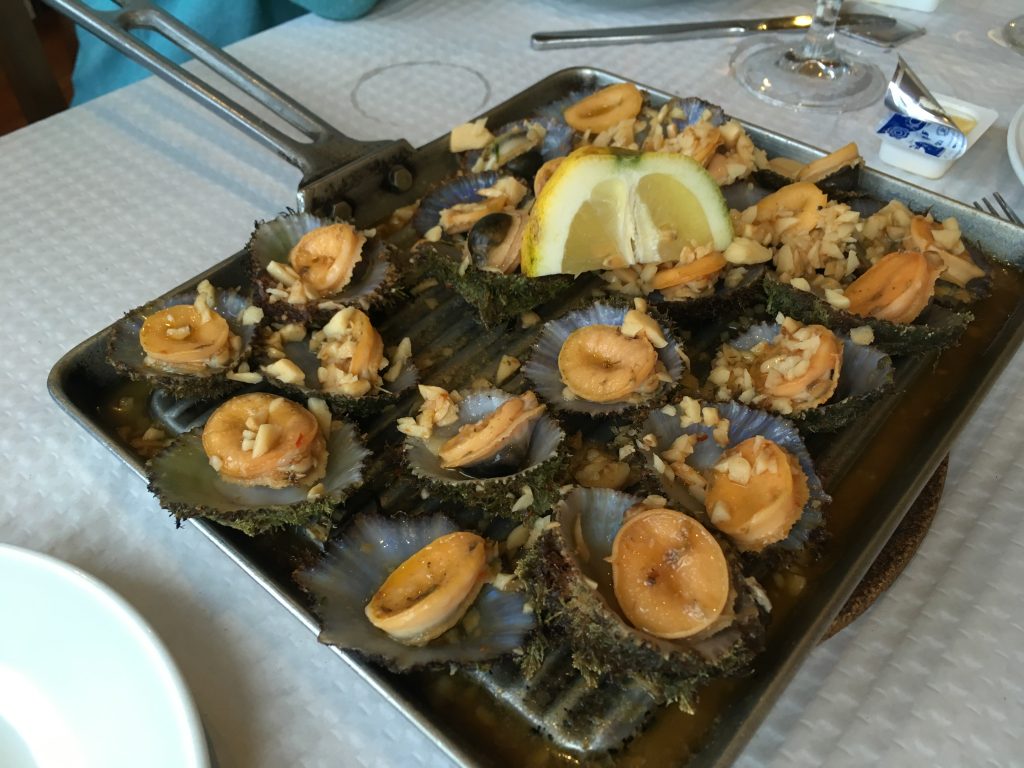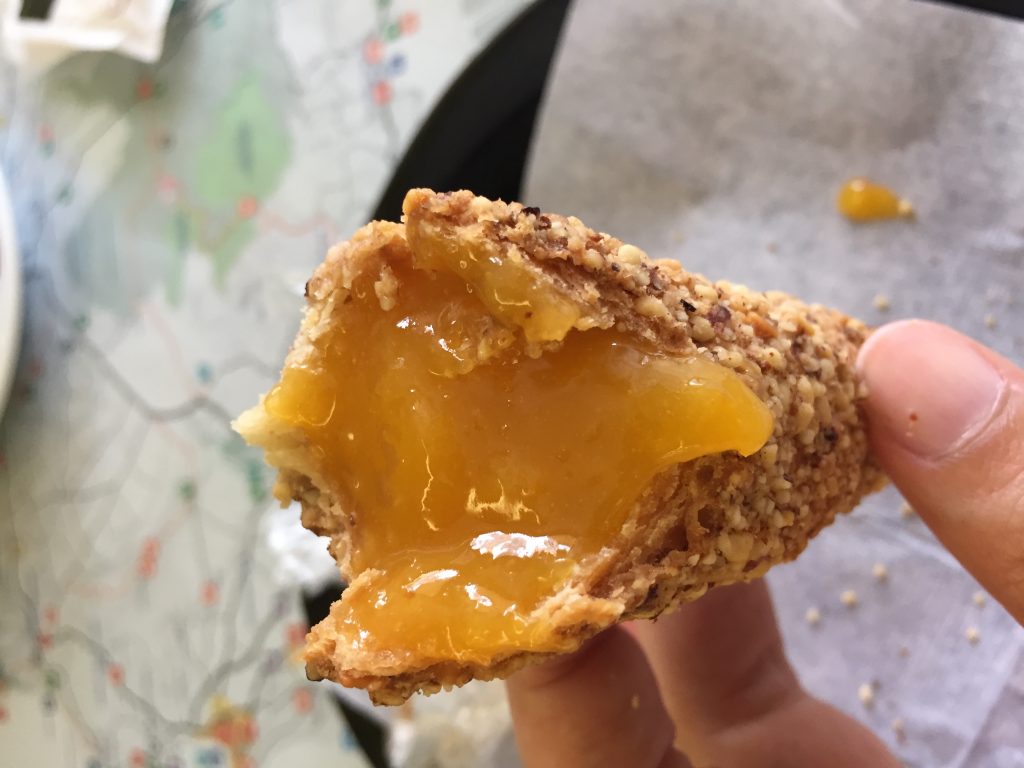a beautiful egg-themed postcard that landed on our mailbox some weeks ago, all the way from finland. friends definitely know how to cheer us up! :)
Category: foooood
what we ate in terceira
my tasting memory is quickly fading, so it’s time to do one of these food recaps again!

the gastronomic pride and joy of the island is alcatra, a beef stew that is slowly cooked in a clay pot for hours. some prefer the top bits of the pot (which are drier) and some prefer to grab their meat from the depths of it, where the pieces are moist, drenched in sauce and falling off the bone. they tasted equally great to me, and we ended up having it several times around the island.
i’m a fan of charcuterie, and the island’s chouriço (smoked sausage) and morcela (blood sausage) were divine. especially the morcela…
…goodness!
friends invited us for lapas (limpets), a type of sea snails found in azores. we gave them a go, and they were surprisingly delicious! drenched in garlic and lemon, they pop right off their shell.
quinta dos açores is a meat & dairy business (there are more cows than inhabitants in terceira!), with a side gig of restaurant & ice-cream parlor. the design of the place is refreshingly modern and the dishes are great too. :)
more charcuterie and the island’s inhame (taro), a sort of sweet potato that is served steamed.
now and then you could sense the influence of the american base looming nearby — pizza and fried chicken were never very far, as well as mountain dew and other drinks. we even saw fanta grape in a supermarket!
in between hikes, we took a detour to queijo vaquinha to try their cheese platter. the cheeses were good, but the bread was amazing! and of course, we drowned it all with kima, the fizzy drink from azores that comes in pineapple or passionfruit flavors.
what about dessert? sadly, i forgot to take some proper photos of all the delicious d. amélias we had, a mini cake quite similar to broas de mel, but somehow better and more delicate, as the regal name would imply.
but i did take a photo of the island’s cornucópias. these almond cones filled with egg cream were were amazing… but i’m glad we tasted them only on the last day because boy, that was heavy. they’re small, but probably pack enough calories in them for the whole day! :D
and i think that covers it! it was a good trip all around, filled with awe and discovery, and i only wish we could have stayed a bit longer to go on exploring. i guess that’s our cue to come back again soon!
a life of curiosity & enthusiasm
“He will be remembered for his curiosity — and curiosity is hopeful. To be an enthusiast is to believe that you will duck around the next corner and find a place where you’ve never had anything like the bowl of noodles they’re going to make for you. To be an explorer, always, without hesitation, is the opposite of cynicism. It’s the opposite of surrender to all the blood and innards and, to quote one of his book titles, the nasty bits. To wander is to believe in the expansive worth of the world you live in and to have faith that you have not run out of people to meet or places to visit.”
linda holmes, remembering anthony bourdain.
oysters
although the only time we ever ate oysters a few years ago was quite memorable (for the worst reasons), i still think they’re pretty fascinating. how come this contorted ugly shells can produce such smooth interiors and even pearls sometimes?
even the ancient romans were intrigued by them, and decided to farm them off the coast of italy. these days, the local people continue this tradition here in the brackish waters of the ria formosa lagoon.
the whole operation looks surprisingly low-tech. the larvae are grown in tanks and later transfered to these mesh envelopes which are just laid on the floor or in raised beds, and get covered in water when the tide rises. they can stay there for over a year, depending on the size.
and apparently, unlike other forms of aquaculture, oyster farming is actually benign for the environment, as the bivalves filter the water for the bad stuff, at an incredible rate of up to 4 liters/hour.
intriguing as they might be, i think i’ll pass on them for the next few years at least…
i don’t think i’ve ever met a fruit i didn’t like, but passionfruit feels special. the taste is the definition of exotic in my book — sweet and alien-like.
they’re supposed to be fast-growing plants that enjoy heat, and therefore ideal for our southern climate. last year, a neighbor down the street gave us a couple of his own fruits to eat… but having seen their vigorous vines, we jumped at the opportunity to grow our own. we started them in a container back in 2016 and saw first sprouts some weeks later:
we planted them out in the front garden just under the fence, so that they had something to hold on to. after some dormant months, they begun their ascent in the spring of 2017…
fast forward to a year later, and they have taken over the whole thing. had we known they would insist in growing upwards at every chance, we would have made a better effort to pull them sideways while we could… well, too late now.
we also have our first flowers! they’re super pretty, as all passionfruit flowers are. incidentally, did you know where their name comes from? according to wikipedia,
“Around 1700, the name was given by missionaries in Brazil as an educational aid while trying to convert the indigenous inhabitants to Christianity; its name was flor das cinco chagas or “flower of the five wounds” to illustrate the crucifixion of Christ, with other plant components also named after an emblem in the Passion of Jesus.
The name maracuyá or maracujá comes from a Guaraní word meaning “nursery for flies”.
and just this week, we spotted the first fruit! i can’t wait to finally taste it and strike another item off the 101 list! :P






















